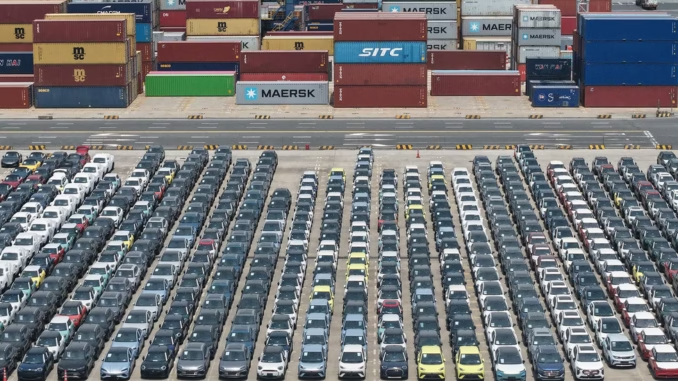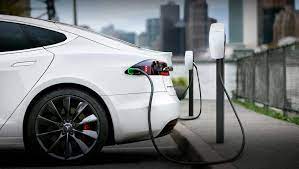
The electric vehicle (EV) sector in China, once hailed as a global powerhouse driving the green energy transition, is now facing a severe crisis characterized by oversupply, cutthroat competition, and mounting financial losses. This downturn threatens not only domestic manufacturers but the broader economy, as the industry grapples with unsustainable practices fueled by years of heavy government subsidies.
With aggressive price wars depleting profits and a glut of vehicles flooding the market, experts warn of an impending “bloodbath” that could lead to widespread consolidations or collapses.
The Roots of the Implosion: Oversupply and Government Distortions
China’s EV boom was propelled by massive state support, with estimates placing financial assistance at over $230 billion from 2009 to 2023—dwarfing subsidies in other nations.
This intervention encouraged overinvestment, resulting in an unsustainable production surge. Today, 46 domestic and international automakers compete in the Chinese EV space, leading to “involution”—a term describing hyper-competitive, low-profit environments where companies engage in destructive practices like selling new vehicles as “used” to meet sales targets.
Price wars have intensified, with manufacturers slashing costs to attract buyers amid sluggish consumer spending and a slumping property market. Even dominant players like Nio reported $1.6 billion in losses in the first half of 2025, despite state bailouts in the past.
Beijing has cracked down on disorderly competition, but critics argue this addresses symptoms rather than root causes like excess capacity. Great Wall Motor’s chairman warned of a potential financial crisis in the industry, highlighting how state-owned or supported firms are artificially prolonged, hoarding jobs at the expense of profitability.
Internationally, tariffs—such as the U.S.’s 100% levy on Chinese EVs and similar hikes by the EU, Canada, and others—have restricted exports, exacerbating domestic pressures.
While this could lower global car prices for consumers, it risks a catastrophic crash for China’s sector without reforms like gradual subsidy reductions.
Bankruptcies Pile Up: A Wave of Failures in 2025
The shakeout is already underway. Between 2018 and 2025, over 400 Chinese EV companies have ceased operations, leaving only around 100 active by mid-2025.
Predictions suggest that by 2030, fewer than 50 may survive, with only 15-19 brands expected to remain financially viable in the long term.
In 2025 alone, several high-profile bankruptcies have highlighted the crisis. Hozon New Energy Automobile, parent of the Neta brand, entered bankruptcy restructuring, ceasing operations and leaving owners stranded without maintenance support.
BYD, the market leader, has warned that up to 100 automakers could fold in the coming months as the price war ends and weaker players succumb.
Other examples include ongoing struggles at firms like Ji Yue Auto and WM Motor, with the latter relying on local government financing to restart factories amid prior financial woes.
The ripple effects extend to parts suppliers, who face delayed payments and price squeeze from carmakers.
While exact numbers for Chinese EV parts company bankruptcies in 2025 are scarce, the sector is under immense strain, with banks exposed to potential heavy losses if suppliers default.
Globally, this has even impacted foreign suppliers, with German firms forecasting a 30% rise in bankruptcies due to Chinese competition and weak demand.
Market Shares: Chinese Dominance Amid Internal Turmoil
Despite the domestic implosion, Chinese manufacturers continue to lead the global EV market. Based on deliveries from January to August 2025, Chinese firms hold six of the top ten spots, commanding over 43% of the worldwide market share collectively.
BYD leads with nearly 20%, followed by Geely at 10.2%, while Tesla trails in third at 7.7% after an 11% year-over-year decline.
Here’s a breakdown of the top global EV manufacturers by market share (Jan-Aug 2025):
|
Manufacturer
|
Country
|
Market Share (%)
|
|---|---|---|
|
BYD
|
China
|
19.9
|
|
Geely
|
China
|
10.2
|
|
Tesla
|
USA
|
7.7
|
|
Volkswagen
|
Germany
|
6.7
|
|
SAIC
|
China
|
5.6
|
|
Changan
|
China
|
4.4
|
|
Hyundai & Kia
|
South Korea
|
3.2
|
|
Chery
|
China
|
3.1
|
|
BMW
|
Germany
|
3.0
|
|
Stellantis
|
Netherlands
|
2.7
|
|
Others
|
–
|
33.5
|
In China itself, the NEV (new energy vehicle, including EVs and PHEVs) market is even more concentrated. As of August 2025, BYD holds a commanding 29% share, Geely 13%, and SAIC 7%, with over 80% of sales dominated by top players.
Total EV sales in China hit records, with BEV deliveries reaching 3.5 million units in the first half of 2025 alone—a 43.7% increase year-over-year.
However, this growth masks underlying weaknesses, as the market share of EVs in China surpassed 50% for the first time, driven by aggressive promotions rather than organic demand.
A Call for Revival: Is a Defibrillator on the Way?
China’s EV market, while globally dominant, is teetering on the edge of collapse due to internal inefficiencies and external barriers.
To revive it, Beijing may need to implement targeted reforms—such as reducing subsidies gradually and allowing market forces to drive consolidation—acting as a “defibrillator” to shock the industry back to health. Without intervention, the sector’s implosion could drag down related industries and hinder China’s green ambitions, even as it continues to shape the global auto landscape.







Be the first to comment